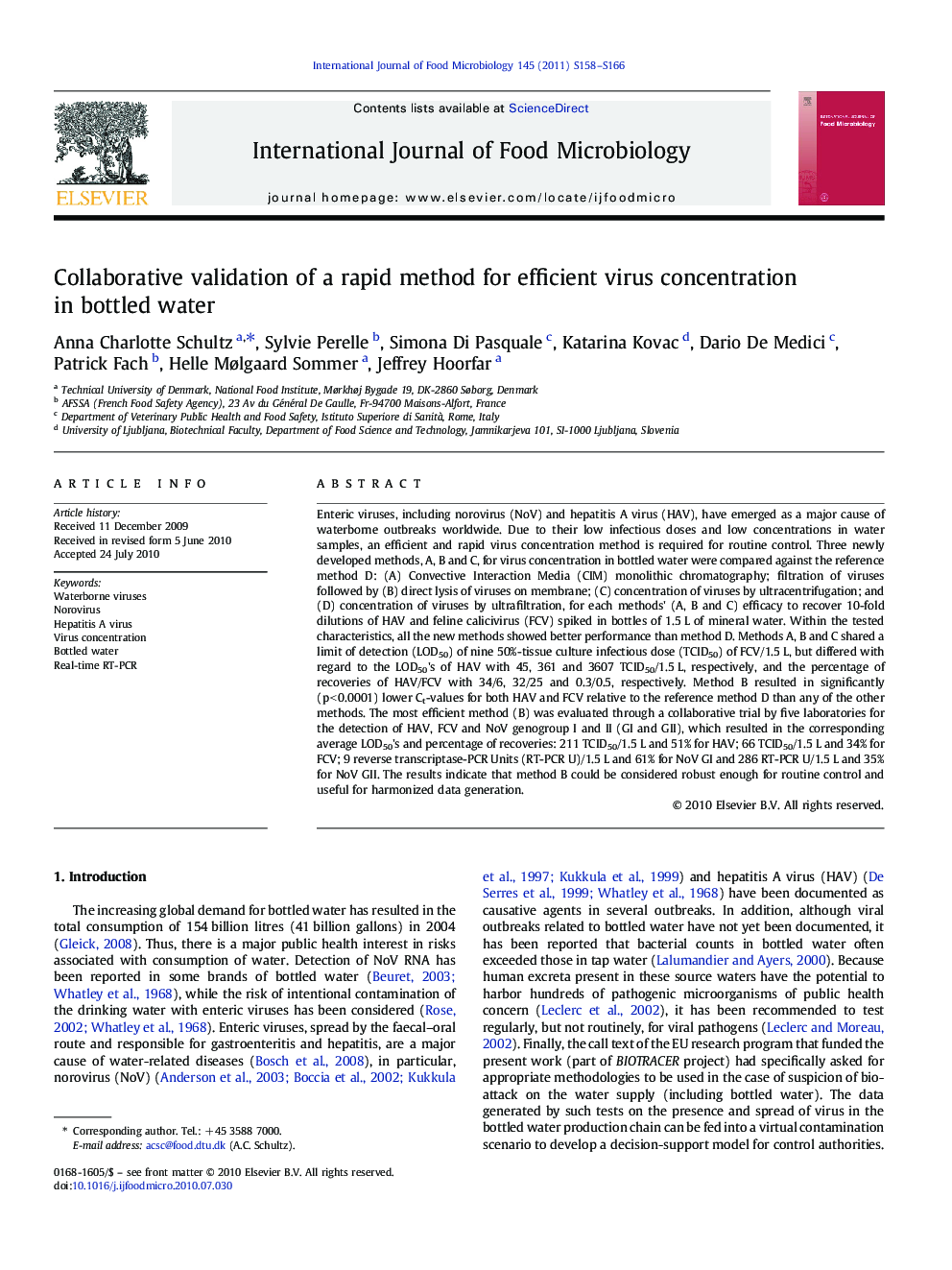| کد مقاله | کد نشریه | سال انتشار | مقاله انگلیسی | نسخه تمام متن |
|---|---|---|---|---|
| 4367892 | 1616675 | 2011 | 9 صفحه PDF | دانلود رایگان |

Enteric viruses, including norovirus (NoV) and hepatitis A virus (HAV), have emerged as a major cause of waterborne outbreaks worldwide. Due to their low infectious doses and low concentrations in water samples, an efficient and rapid virus concentration method is required for routine control. Three newly developed methods, A, B and C, for virus concentration in bottled water were compared against the reference method D: (A) Convective Interaction Media (CIM) monolithic chromatography; filtration of viruses followed by (B) direct lysis of viruses on membrane; (C) concentration of viruses by ultracentrifugation; and (D) concentration of viruses by ultrafiltration, for each methods' (A, B and C) efficacy to recover 10-fold dilutions of HAV and feline calicivirus (FCV) spiked in bottles of 1.5 L of mineral water. Within the tested characteristics, all the new methods showed better performance than method D. Methods A, B and C shared a limit of detection (LOD50) of nine 50%-tissue culture infectious dose (TCID50) of FCV/1.5 L, but differed with regard to the LOD50's of HAV with 45, 361 and 3607 TCID50/1.5 L, respectively, and the percentage of recoveries of HAV/FCV with 34/6, 32/25 and 0.3/0.5, respectively. Method B resulted in significantly (p < 0.0001) lower Ct-values for both HAV and FCV relative to the reference method D than any of the other methods. The most efficient method (B) was evaluated through a collaborative trial by five laboratories for the detection of HAV, FCV and NoV genogroup I and II (GI and GII), which resulted in the corresponding average LOD50's and percentage of recoveries: 211 TCID50/1.5 L and 51% for HAV; 66 TCID50/1.5 L and 34% for FCV; 9 reverse transcriptase-PCR Units (RT-PCR U)/1.5 L and 61% for NoV GI and 286 RT-PCR U/1.5 L and 35% for NoV GII. The results indicate that method B could be considered robust enough for routine control and useful for harmonized data generation.
Journal: International Journal of Food Microbiology - Volume 145, Supplement 1, 1 March 2011, Pages S158–S166